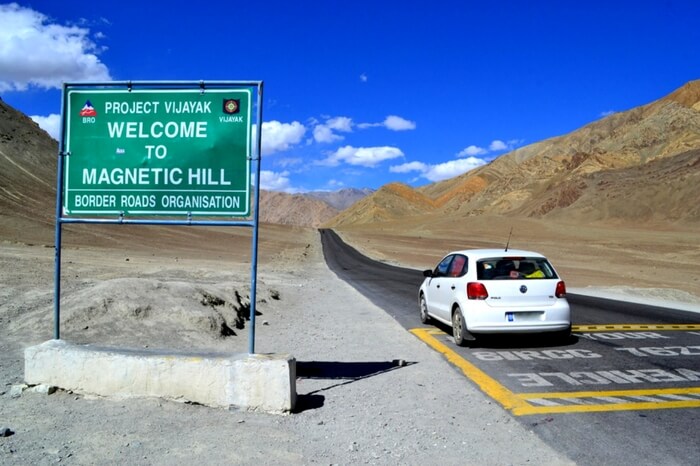An incredible new technology is being used to take the lid off the mysteries of the Mayan civilization. Using advanced light detection equipment and techniques scientists have virtually removed the jungle canopy to reveal a sprawling city with over 60,000 structures. It’s given us a window into their culture and daily lives like never before and may finally offer us a clue as to what exactly happened to a civilization that was collapsing by the time European explorers arrived.
1. What happened to the Mayans?
The Mayan civilization was enormous. Anywhere from 7 to 11 million people lived within its expansive kingdom. Though the popular opinion is that the Mayan civilization was conquered by Spanish Conquistadors, we don’t actually know what led to the decline of their society. However, there are many theories. The Mayans peaked long before European explorers arrived (roughly 1,200 years ago, while Columbus only arrived about 500 years ago). New laser technology is giving
archaeologists clues about what made Mayan civilization decline to the point that it was largely undefended when the Spanish arrived. So if the Spanish didn't wipe them out, then who or what did?
 2. Once a city, now it’s a jungle
Ancient Maya has been studied by mainstream archaeologists and historians since the culture was rediscovered in 1843, but not until recently has the exploration of Mayan culture gone full throttle. In 2018 alone tens of thousands of structures have been found and dozens of miles of roads, canals, and causeways connecting the massive society.
The year 2018 has
2. Once a city, now it’s a jungle
Ancient Maya has been studied by mainstream archaeologists and historians since the culture was rediscovered in 1843, but not until recently has the exploration of Mayan culture gone full throttle. In 2018 alone tens of thousands of structures have been found and dozens of miles of roads, canals, and causeways connecting the massive society.
The year 2018 has
been especially kind to researchers, and new technology is enabling a renaissance of finds that show us the real Mayan culture. The next photo shows us just how incredible the technology is, as it peals back the layers of the photo above, and reveals how the jungle made it so difficult to learn Mayan secrets.
 3. Archaeologists used to walk the jungle to find Mayan ruins
For over 150 years archaeologists have been exploring ancient Mayan ruins in much the same way. While flying technology allowed for a nice aerial view of Mayan ruins that poke through the thick canopy, much of the real work and discovery was done on the ground.
But the jungle is a thick mangled mess of vegetation that enables just 2% of sunlight to weave its way to the ground. That means that plant life has to grow, fast, to reach the light of the sun. That growth swallows anything in its path and buries it deep. It’s not science fiction, but scientists are flipping the script by opening the lid on the jungle canopy using new laser technology.
3. Archaeologists used to walk the jungle to find Mayan ruins
For over 150 years archaeologists have been exploring ancient Mayan ruins in much the same way. While flying technology allowed for a nice aerial view of Mayan ruins that poke through the thick canopy, much of the real work and discovery was done on the ground.
But the jungle is a thick mangled mess of vegetation that enables just 2% of sunlight to weave its way to the ground. That means that plant life has to grow, fast, to reach the light of the sun. That growth swallows anything in its path and buries it deep. It’s not science fiction, but scientists are flipping the script by opening the lid on the jungle canopy using new laser technology.
 4. People flying over Mayan civilization couldn’t see much
Jungle vegetation has literally covered up an entire civilization, leaving future generations unable to discover how Mayans truly lived. Only the most massive of structures poke their tops through the jungle canopy, and if it weren’t for UNESCO and the Mexican government they would still be completely covered.
For 1,200 years the jungle slowly ate away at ancient Maya. In 1929 Charles Lindbergh took his wife Anne for ride over the
4. People flying over Mayan civilization couldn’t see much
Jungle vegetation has literally covered up an entire civilization, leaving future generations unable to discover how Mayans truly lived. Only the most massive of structures poke their tops through the jungle canopy, and if it weren’t for UNESCO and the Mexican government they would still be completely covered.
For 1,200 years the jungle slowly ate away at ancient Maya. In 1929 Charles Lindbergh took his wife Anne for ride over the
Yucatan Peninsula, offering a view of the jungle rarely seen before. In her diary she wrote, “unspeakably alone and majestic and desolate — the mark of a great civilization gone.” Too bad she didn’t have a LiDar laser, because this next bit gets a little interesting to say the least.
 5. Newly discovered pyramid
Historians and archaeologists will likely continue to make theories only to see them debunked by new discoveries. The new technology that is making this all possible is something called LiDAR (“Light Detection and Ranging”) imaging, and it’s responsible for the over 60,000 structures just discovered in September 2018, which includes a pyramid that is seven stories high!
The team responsible for the imaging covered an area of almost 800 square miles and fired
5. Newly discovered pyramid
Historians and archaeologists will likely continue to make theories only to see them debunked by new discoveries. The new technology that is making this all possible is something called LiDAR (“Light Detection and Ranging”) imaging, and it’s responsible for the over 60,000 structures just discovered in September 2018, which includes a pyramid that is seven stories high!
The team responsible for the imaging covered an area of almost 800 square miles and fired
pulses of laser at the ground at a rate of 900,000 times per second that gives such an accurate picture of the topography that any man-made structures stand out against the natural jungle.
By
Ekshaw.T
1. What happened to the Mayans?
The Mayan civilization was enormous. Anywhere from 7 to 11 million people lived within its expansive kingdom. Though the popular opinion is that the Mayan civilization was conquered by Spanish Conquistadors, we don’t actually know what led to the decline of their society. However, there are many theories. The Mayans peaked long before European explorers arrived (roughly 1,200 years ago, while Columbus only arrived about 500 years ago). New laser technology is giving
archaeologists clues about what made Mayan civilization decline to the point that it was largely undefended when the Spanish arrived. So if the Spanish didn't wipe them out, then who or what did?
 2. Once a city, now it’s a jungle
Ancient Maya has been studied by mainstream archaeologists and historians since the culture was rediscovered in 1843, but not until recently has the exploration of Mayan culture gone full throttle. In 2018 alone tens of thousands of structures have been found and dozens of miles of roads, canals, and causeways connecting the massive society.
The year 2018 has
2. Once a city, now it’s a jungle
Ancient Maya has been studied by mainstream archaeologists and historians since the culture was rediscovered in 1843, but not until recently has the exploration of Mayan culture gone full throttle. In 2018 alone tens of thousands of structures have been found and dozens of miles of roads, canals, and causeways connecting the massive society.
The year 2018 has been especially kind to researchers, and new technology is enabling a renaissance of finds that show us the real Mayan culture. The next photo shows us just how incredible the technology is, as it peals back the layers of the photo above, and reveals how the jungle made it so difficult to learn Mayan secrets.
 3. Archaeologists used to walk the jungle to find Mayan ruins
For over 150 years archaeologists have been exploring ancient Mayan ruins in much the same way. While flying technology allowed for a nice aerial view of Mayan ruins that poke through the thick canopy, much of the real work and discovery was done on the ground.
But the jungle is a thick mangled mess of vegetation that enables just 2% of sunlight to weave its way to the ground. That means that plant life has to grow, fast, to reach the light of the sun. That growth swallows anything in its path and buries it deep. It’s not science fiction, but scientists are flipping the script by opening the lid on the jungle canopy using new laser technology.
3. Archaeologists used to walk the jungle to find Mayan ruins
For over 150 years archaeologists have been exploring ancient Mayan ruins in much the same way. While flying technology allowed for a nice aerial view of Mayan ruins that poke through the thick canopy, much of the real work and discovery was done on the ground.
But the jungle is a thick mangled mess of vegetation that enables just 2% of sunlight to weave its way to the ground. That means that plant life has to grow, fast, to reach the light of the sun. That growth swallows anything in its path and buries it deep. It’s not science fiction, but scientists are flipping the script by opening the lid on the jungle canopy using new laser technology.  4. People flying over Mayan civilization couldn’t see much
Jungle vegetation has literally covered up an entire civilization, leaving future generations unable to discover how Mayans truly lived. Only the most massive of structures poke their tops through the jungle canopy, and if it weren’t for UNESCO and the Mexican government they would still be completely covered.
For 1,200 years the jungle slowly ate away at ancient Maya. In 1929 Charles Lindbergh took his wife Anne for ride over the
4. People flying over Mayan civilization couldn’t see much
Jungle vegetation has literally covered up an entire civilization, leaving future generations unable to discover how Mayans truly lived. Only the most massive of structures poke their tops through the jungle canopy, and if it weren’t for UNESCO and the Mexican government they would still be completely covered.
For 1,200 years the jungle slowly ate away at ancient Maya. In 1929 Charles Lindbergh took his wife Anne for ride over the Yucatan Peninsula, offering a view of the jungle rarely seen before. In her diary she wrote, “unspeakably alone and majestic and desolate — the mark of a great civilization gone.” Too bad she didn’t have a LiDar laser, because this next bit gets a little interesting to say the least.
 5. Newly discovered pyramid
Historians and archaeologists will likely continue to make theories only to see them debunked by new discoveries. The new technology that is making this all possible is something called LiDAR (“Light Detection and Ranging”) imaging, and it’s responsible for the over 60,000 structures just discovered in September 2018, which includes a pyramid that is seven stories high!
The team responsible for the imaging covered an area of almost 800 square miles and fired
5. Newly discovered pyramid
Historians and archaeologists will likely continue to make theories only to see them debunked by new discoveries. The new technology that is making this all possible is something called LiDAR (“Light Detection and Ranging”) imaging, and it’s responsible for the over 60,000 structures just discovered in September 2018, which includes a pyramid that is seven stories high!
The team responsible for the imaging covered an area of almost 800 square miles and fired pulses of laser at the ground at a rate of 900,000 times per second that gives such an accurate picture of the topography that any man-made structures stand out against the natural jungle.
By
Ekshaw.T





